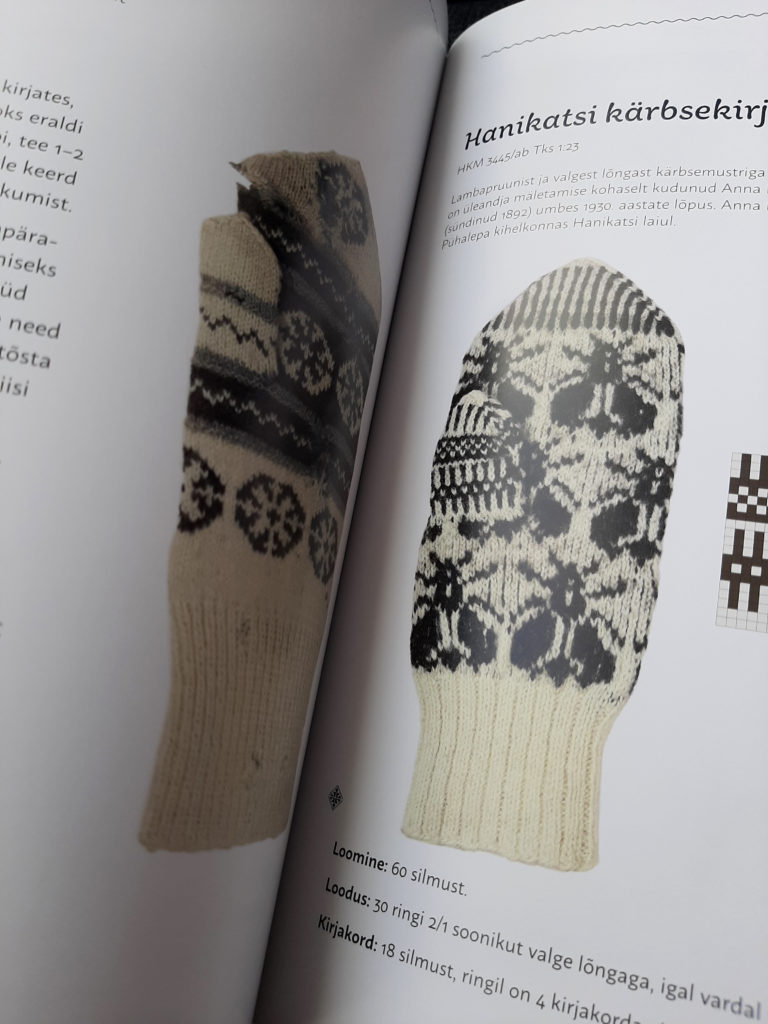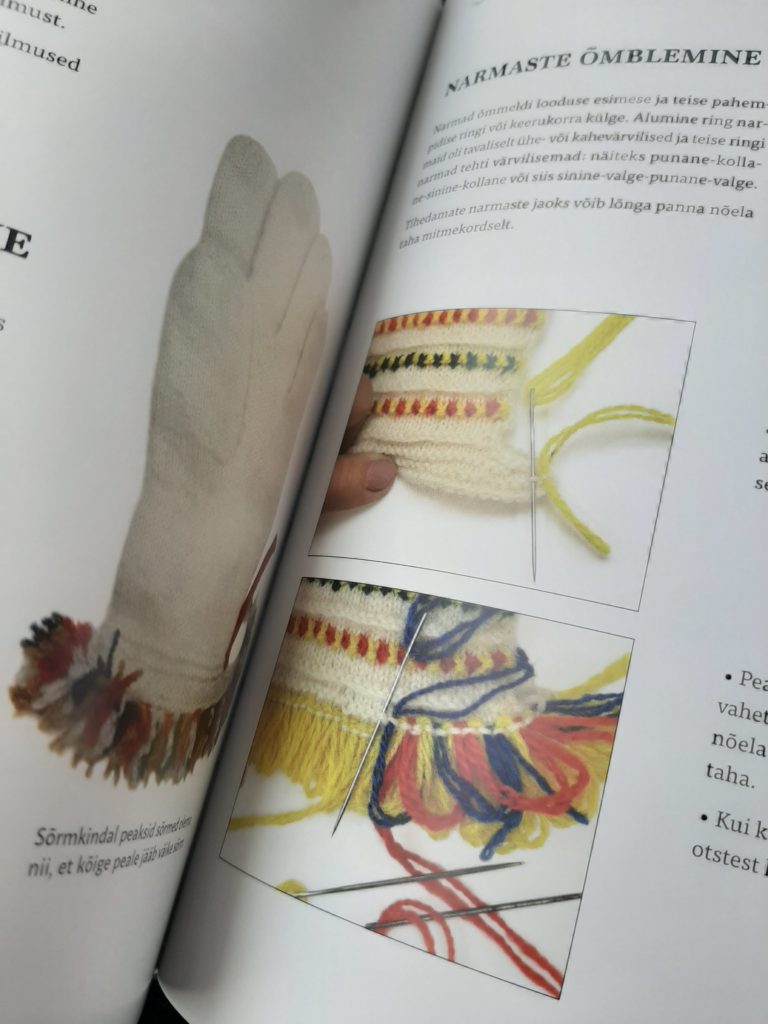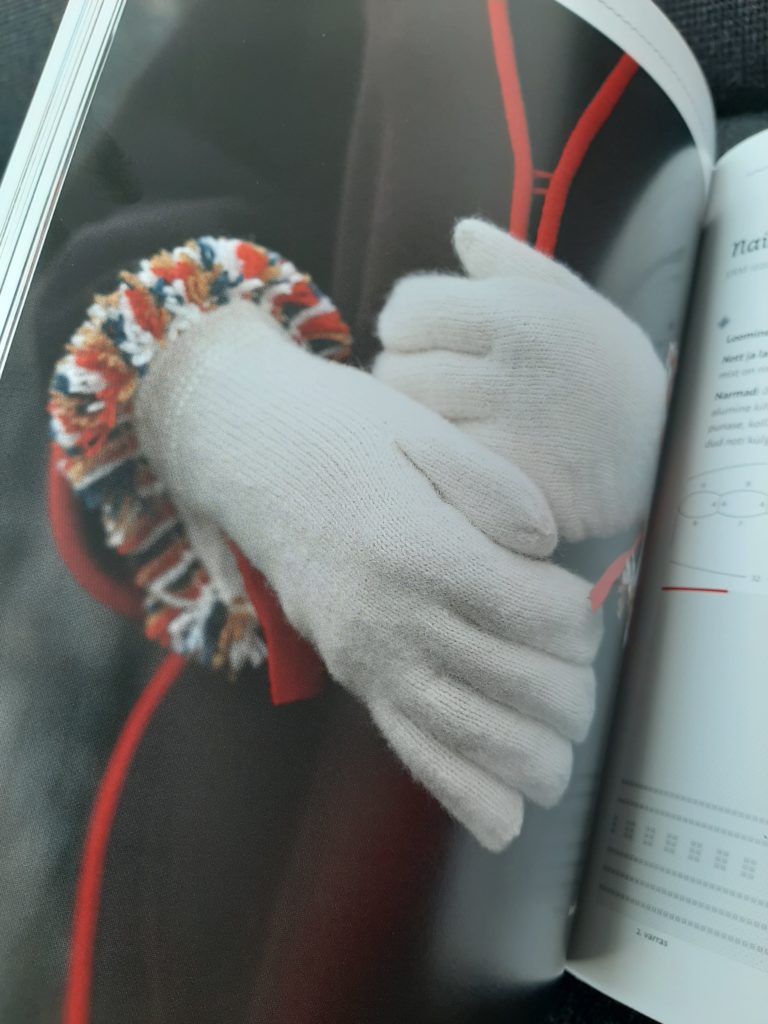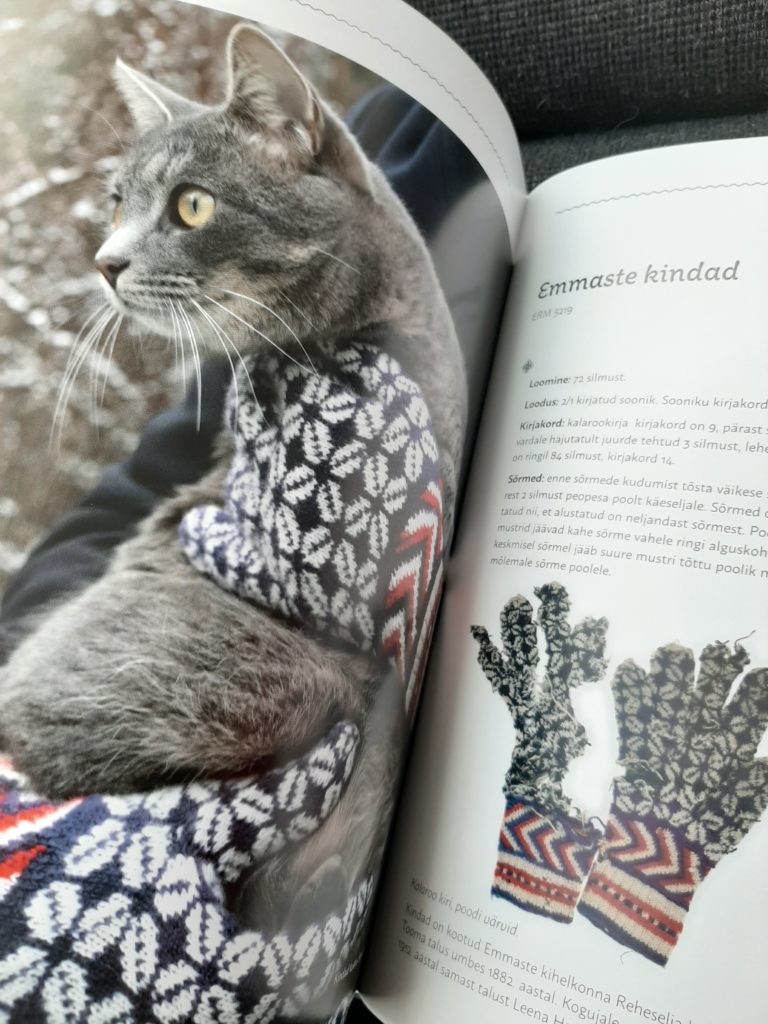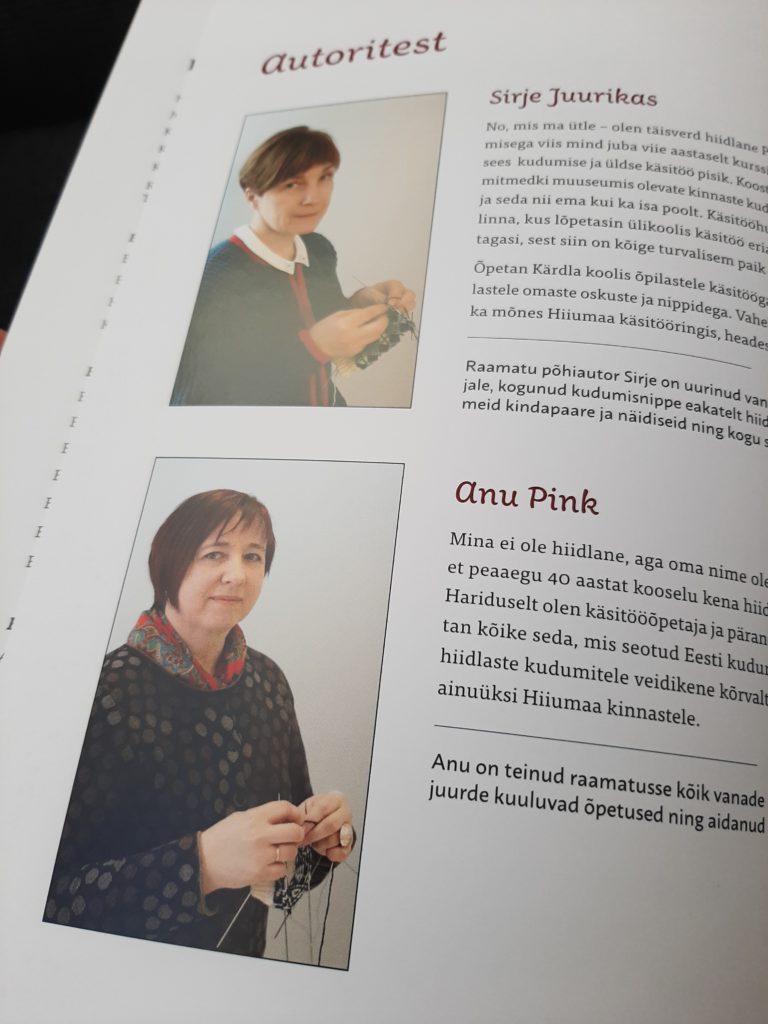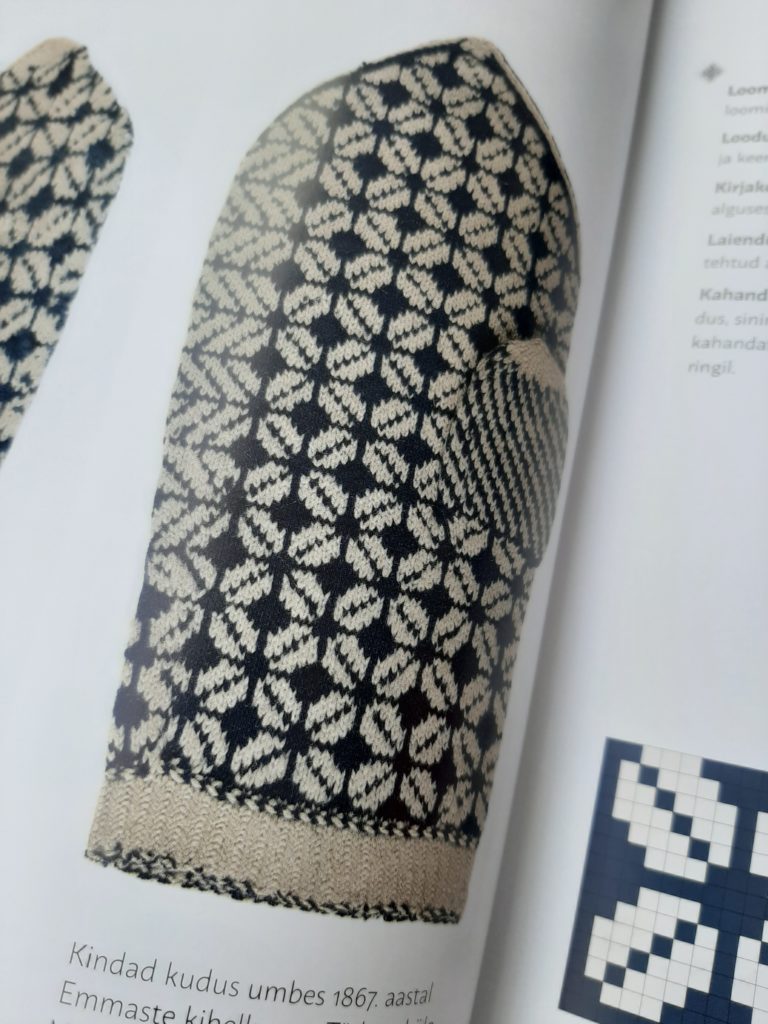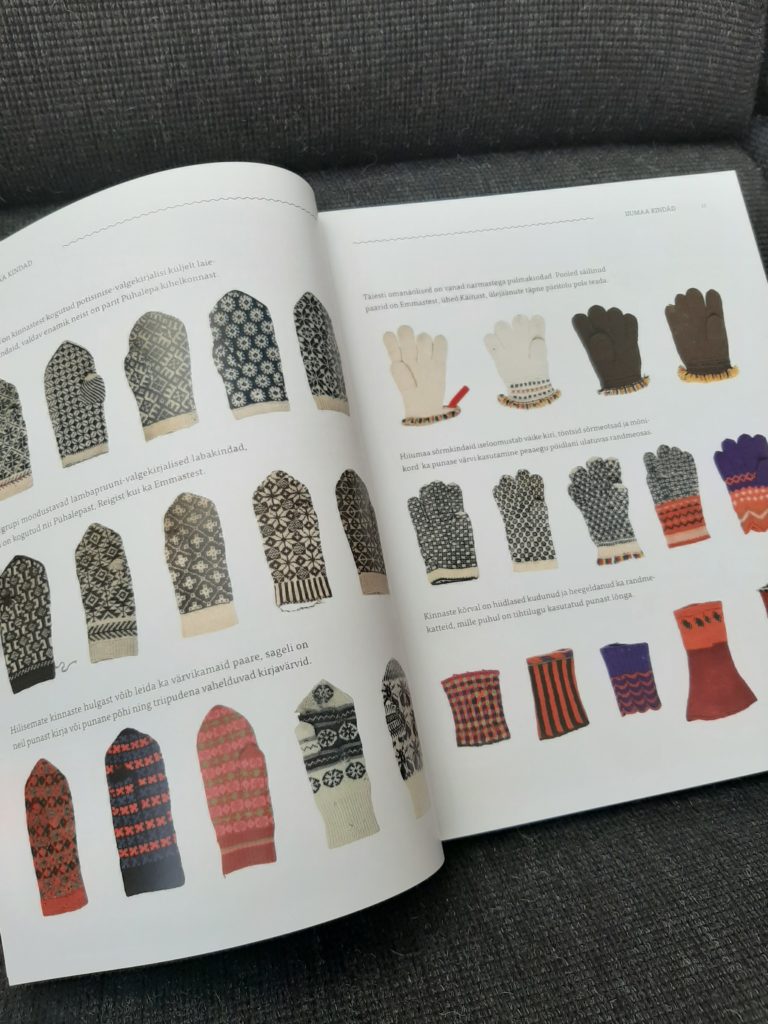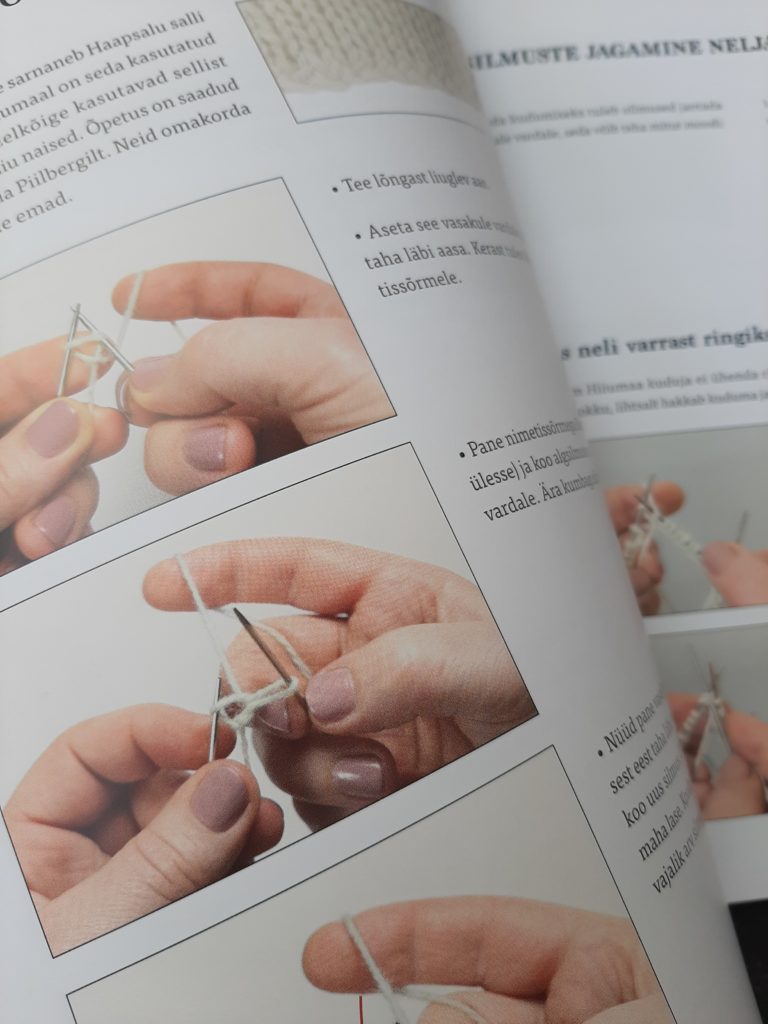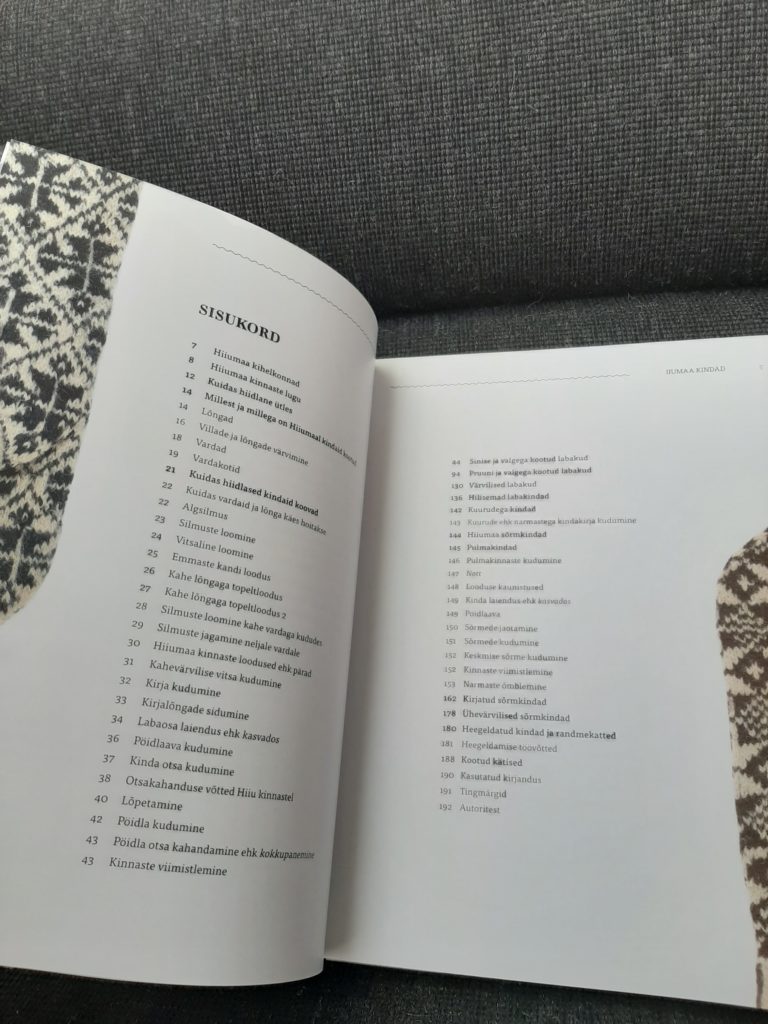Hiiumaa Kindad
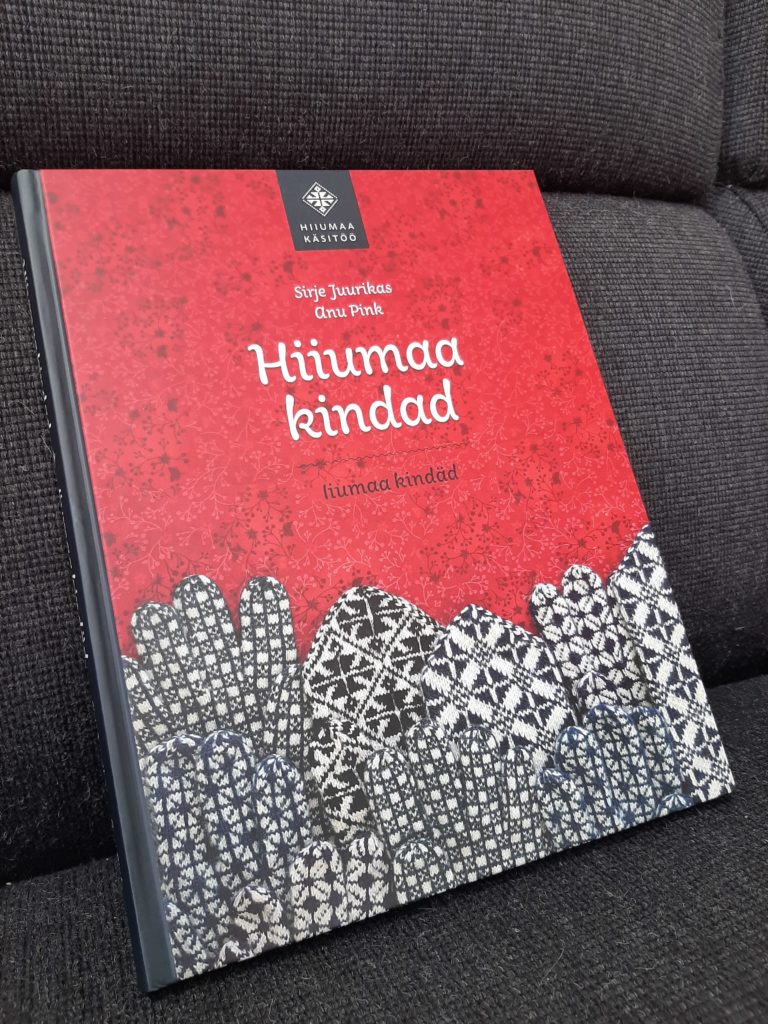
Boeken openen je ogen voor de wereld die in de tijd van corona voor ons is gesloten. Het was natuurlijk balen dat mijn reis met mijn vrienden naar Estland moet worden uitgesteld, maar er komen betere tijden en ondertussen bestel ik maar wat mooie boeken om me aan te verlekkeren. Uitgeverij Saara maakt zich al jaren sterk voor het in stand houden en archiveren van handwerk en tradities in Estland, wat resulteerde in een indrukwekkende rij prachtige handwerkboeken, die over de hele wereld worden verkocht. De serie Estonian Knitting, waarvan over een poosje deel III uitkomt, wordt gezien als een standaardwerk in de breiwereld. Een belangrijke rol is daarbij weggelegd voor Anu Pink, die met hulp van Sirje Juurikas ook Hiiumaa Kindad schreef.
Hiiumaa Kindad gaat exclusief over het traditionele breiwerk op het Estse eiland Hiiumaa. Het prachtig uitgegeven hardcover boek is gevuld met motieven en patronen van breiwerk van het eiland Hiimaa, ten westen van Estland. De wanten en handschoenen uit musea van het eiland werden bestudeerd en nauwgezet nagebreid om te worden omgezet in bruikbare patronen. Ook wordt er veel uitgelegd over de specifieke kenmerken van breiwerk uit dit deel van Estland, die vaak afwijkend zijn van dat wat ik elders in Estland heb gezien. Wanten met extra ruimte aan de zijkant in motieven die verschillen van de rest van de want, rode vilten bandjes aan de boord, franjes aan wijd uitstaande boorden en variaties op de schaapscheerdershaaksteek (Bosnisch haakwerk). Er is veel variatie in motieven, van klein naar iets groter, maar ook effen handschoenen en polswarmers met streepmotieven. Sommige motieven zie je ook elders in het Baltisch gebied, zoals kleine sterren, ruitjes en ruiten met kruisen erin. Ook de grappige vlieg uit het nabij gelegen Saaremaa ontbreekt niet.
Hoewel het boek in het Est is geschreven, is dat niet echt een probleem, want alle essentiële technieken zijn vergezeld van foto’s, de patronen zijn prima te gebruiken voor een gemiddelde breier en de foto’s, daar hoef je alleen maar van te genieten. En ach, inmiddels spreek ik weliswaar geen Ests, maar ik herken veel (handwerk)woorden en anders is er altijd nog Google Translate.
Books open your eyes to the world that is closed to us in the time of corona. It was of course disappointing that my trip with my friends to Estonia had to be postponed, but there will be better times and in the meantime I order some nice books to cheer me up. Saara Publisher House has been committed to preserving and archiving handicrafts and traditions in Estonia for years, resulting in an impressive row of beautiful craft books, which are sold all over the world. The series Estonian Knitting, from which part III will be released in future, is seen as a standard work in the knitting world. Anu Pink plays an important role in this process. She also wrote Hiiumaa Kindad with the help of Sirje Juurikas.
Hiiumaa Kindad is exclusively about traditional knitting on the Estonian island of Hiiumaa. The beautifully published hardcover book is filled with patterns and knitting patterns from the island of Hiimaa, west of Estonia. The mittens and gloves from the island’s museums were studied and painstakingly knitted to be converted into usable patterns. Much is also explained about the specific features of knitting from this part of Estonia, which is often different from what I have seen elsewhere in Estonia. Mittens with extra side space decorated with motifs that differ from the rest of the mitten, red felt straps on the hem, fringes on flaring cuffs and variations on the Bosnian crochet stitch. There is a lot of variation in motifs, from small to slightly larger, but also plain gloves and wrist warmers with stripe motifs. Some motifs can also be seen elsewhere in the Baltic region, such as small stars, diamonds and diamonds with crosses in the center. The funny fly from nearby Saaremaa is also present.
Although the book is written in Estonian, is is very usable, because all essential techniques are accompanied by photos, the patterns are great for an average knitter and the photos, well, you just have to enjoy them. And no, I don’t speak Estonian now, but I recognize many (craft) words and otherwise there is always Google Translate.
Bestel/order: de Afstap in Amsterdam
